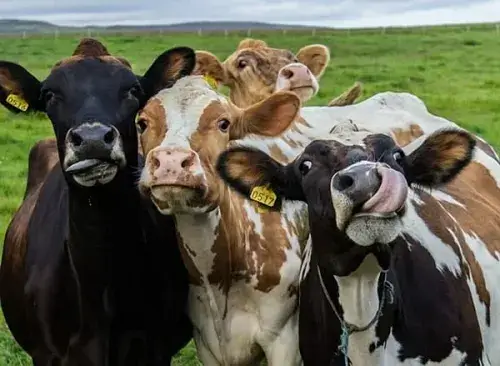Guide to Prevention. In today’s fast-paced world, where we are constantly exposed to various risks, prioritizing our health and safety is crucial. Injury prevention is not just a concept; it’s a fundamental habit that allows us to live a confident and balanced life.
We can’t escape all dangers, but we can learn to recognize potential risks and prepare for the unexpected. Injuries often occur when we are unaware of our surroundings or when we choose to ignore basic safety measures.
By being proactive and making safety a part of our daily routine, we can significantly reduce the chances of getting hurt.
This article explores several common sources of injury and provides practical advice on how to navigate them safely. By understanding these risks, we can be more mindful and deliberate in our actions, ensuring our well-being and the safety of those around us.
Guide, the Most Common Places for Injuries.
Injuries can happen anywhere, but some places and situations are particularly prone to accidents. We’ll explore three common scenarios: stairs, elevators, and water.
By understanding the specific risks associated with each, we can more effectively prevent injuries.
The Dangers of Stairs.
Stairs are one of the most common locations for accidents, often leading to falls that can result in a range of injuries, from sprains and fractures to more severe head trauma.
A report from the American Journal of Emergency Medicine stated that in the United States alone, an astonishing 1,076,558 people are injured on stairs each year.
While that number might seem statistically “normal,” it’s a stark reminder that we often take this common feature of our daily lives for granted.
Compared to elevators and escalators, which many people fear more, simple stairs are far more dangerous in terms of injury frequency.
To reduce the risk of a fall, it is essential to keep staircases well-lit, clean, and dry. Installing non-slip treads and sturdy handrails can also provide crucial support.
Always use the handrail, and avoid carrying too many items at once so that you have a clear view of your path. While it’s tempting to rush, especially when you’re in a hurry, taking your time on stairs is one of the easiest ways to prevent an accident.
Elevators.
A Vertical Ride with Hidden Risks.
Elevators are another common setting for accidents. The risks are often associated with the doors closing too quickly or with system malfunctions. While many people have an irrational fear of being trapped in a metal box suspended over a chasm, the more frequent risks are much more mundane but still dangerous.
People can trip while stepping in or out if the elevator isn’t perfectly level with the floor, or they might get a hand or an item caught in the closing doors.
Fortunately, modern elevators are equipped with numerous safety features. However, regular maintenance and safety inspections are still crucial for minimizing risks and ensuring everyone’s safety.
For those who, like the original author of this text, prefer to avoid these “vertical devices,” taking the stairs is a valid choice. While it might require a bit more effort, it can also be a great way to incorporate a little extra physical activity into your day.
Water.
A Source of Life and Potential Danger.
Water is essential for life, but it can also be a dangerous environment. Swimming pools, lakes, and oceans all present risks, primarily drowning or injuries sustained from jumping or running near the water.
Statistics on drowning are truly staggering: the World Health Organization (WHO) estimates that nearly 236,000 people die from drowning each year, accounting for about 8% of all deaths worldwide. Many of these incidents are preventable and often happen due to negligence, such as swimming alone or after consuming alcohol.
Beyond drowning, water can also be a source of poisoning, especially if it is contaminated. The same WHO data indicates that around 485,000 deaths annually are linked to contaminated water sources.
Because of these dangers, it is critical to educate ourselves on water safety, always supervise children near water, and never swim alone.
Additionally, if you are in a natural body of water, be aware of the currents and your surroundings. Remember, never underestimate the power of water—whether it’s a vast ocean or a seemingly harmless glass in front of you.
Potential Hazards from Animals.
From Pets to Livestock.
Our animal companions, from family dogs to farm animals, enrich our lives but also present potential hazards that can lead to serious injuries. Understanding how to interact with these animals and manage the associated risks is key to staying safe.
Dogs
Man’s Best Friend or a Potential Threat?
Dog attacks are a common source of injury, affecting both children and adults. Untrained or aggressive dogs can bite and cause significant trauma. It’s important to know how to react when you encounter an unfamiliar or aggressive dog.
The key is to remain calm and avoid making direct eye contact, as this can be seen as a challenge. Slowly and calmly back away, keeping your body language non-threatening. Never scream or run, as this can trigger the dog’s predatory instincts and intensify its aggression.
Beyond physical attacks, dogs can also be carriers of various diseases. They are the primary global vector for rabies. Dog bites can also become infected in 3-18% of cases, potentially leading to dangerous conditions like meningitis, endocarditis, or septic shock.
Even a seemingly friendly pet can carry diseases if it’s not healthy. Common ailments passed from dogs to humans include brucellosis, salmonellosis, ringworm, and tapeworms, as well as pests like fleas and ticks. Regular veterinary care for your pet is essential not only for their health but for your own as well.
Training and socializing your dog from an early age is the most effective way to prevent aggressive behavior and build a positive relationship with both people and other animals. As a pet owner, you have a responsibility to ensure your pet is well-behaved and safe for others to be around.
Livestock.
A Farm-Sized Warning.
While most of us don’t interact with livestock daily, it’s important to be aware of the risks they pose. Large animals like horses, cows, and bulls can be unpredictable and may react with fear or aggression, leading to dangerous situations.
Even the legendary Genghis Khan had a rough time after falling from his horse, so for us mere mortals, it’s best to keep a safe distance from these powerful creatures.
Whether you’re in Australia, America, or even the countryside near Liepāja, always be cautious around animals with hooves. By maintaining a respectful distance and understanding their behavior, we can significantly reduce the number of potential incidents.
The Silent Threat.
Mosquitoes and Disease.
Among the natural dangers we face, mosquitoes are more than just an annoyance they are a significant health threat. These tiny insects can transmit serious diseases like Lyme disease, West Nile virus, and Zika virus. Protecting yourself from these risks is essential for safely enjoying the outdoors.
One of the most effective ways to prevent mosquito bites is to choose the right clothing. Wearing long sleeves, long pants, and light-colored clothing can help. Mosquitoes are often attracted to darker colors, so opting for brighter tones can reduce their interest.
In addition to clothing, using insect repellent is a highly effective solution. Choose repellents that contain DEET or oil of lemon eucalyptus for maximum protection.
Be sure to apply the repellent to all exposed skin and clothing before going outside, and reapply it every few hours, especially in hot or humid conditions when mosquitoes are most active.
Furthermore, you can make your environment less hospitable to mosquitoes. Remove standing water from your property, such as in flowerpots, gutters, or birdbaths, as this is where mosquitoes breed.
Try to plan your outdoor activities for the early morning or late evening, as mosquitoes are particularly active at dawn and dusk. Avoid using heavily scented perfumes or cosmetics, which can attract insects.
By taking these simple yet effective precautions, you can significantly increase your safety and reduce the risk posed by natural dangers like mosquitoes.
Stay safe and enjoy your day!





